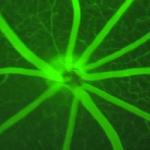Research Topics
The Section on Developmental Neurogenomics (SDN) is dedicated to better understanding the biology of childhood-onset neuropsychiatric disorders in ways that might ultimately help to improve disease prediction, detection, and treatment. Together with our collaborators, we work towards this goal in three mutually informative ways.
First, we study rare genetic disorders that increase risk for mental health difficulties. These disorders are important medical conditions in their own right, and also shed broader light on mechanisms of biological risk in psychiatry. Affected individuals and their family members attend the NIH Clinical Center as outpatients for detailed assessments of mental health cognitive functioning, brain organization and cellular functioning. We use these rich data to inform clinical care and computationally reconstruct genetic influences in the developing human brain.
Second, we study sex as a neurobiological variable that influences mental health outcomes in the general population. This influence likely reflects a complex mix of biological, psychological and social factors. We use a combination of behavioral, neuroimaging and postmortem data to map normative sex-differences in the human brain and test if these intersect with the biology of neuropsychiatric disorders.
Third, we create and apply new tools that bridge different levels of human brain research. The human brain can be mapped in large numbers of individuals using neuroimaging, but this approach provides little cellular or molecular information. Conversely, the postmortem approaches that uncover microscopic features rely on small groups and typically focus on a subset of brain regions. We therefore develop and apply tools for the integration of human neuroimaging and postmortem data – to combine the best of both methods and build more holistic “multiscale” models of the human brain in health and disease.
Biography
Armin Raznahan, MD, PhD, is a child and adolescent psychiatrist, and Chief of the Section on Developmental Neurogenomics (SDN). His research combines neuroimaging, genomic and bioinformatic techniques to better understand the architecture of human brain development in health, and in neurogenetic disorders that increase risk for psychiatric symptoms. Dr. Raznahan completed his undergraduate and graduate training in London, UK (Medicine and Pediatrics at King’s College University/Hospital; Psychiatry at the Maudsley Hospital), and then trained as a postdoctoral fellow with Drs. Jay Giedd and Judith Rapoport at the NIMH Intramural Research Program. Dr. Raznahan joined the NIH-Lasker Clinical Research Scholars Program in 2015 and became a tenured Senior Investigator at the NIMH IRP in 2020.
Dr. Raznahan is a member of the UK Royal Colleges of Pediatrics (MRCPCH) and Psychiatry (MRCPsych), and a fellow of the American College of Neuropsychopharmacology (ACNP). He was elected to the American Society for Clinical Investigation in 2024. Dr. Raznahan is currently President-Elect of the Organization for the Study of Sex Differences. He has also sat on the ACNP Membership Committee, the AXYS (Association for X- and Y-Chromosome Variations) Advisory Committee, the Organization for the Study of Sex Differences Council, and the French Autism and Neuro-Developmental Disorders Scientific Advisory Board, as well as Editorial Boards for the Journal of the American Academy of Child and Adolescent Psychiatry, and NeuroImage.
The SDN has been recognized by awards from the NIMH Director (Outstanding Mentorship and Scientific Contributions), ACNP (Eva King-Killam Award for Translational Research) and the American Psychopathological Association (Robins-Guze Award).
Selected Publications
- Liu S, Akula N, Reardon PK, Russ J, Torres E, Clasen LS, Blumenthal J, Lalonde F, McMahon FJ, Szele F, Disteche CM, Cader MZ, Raznahan A. Aneuploidy effects on human gene expression across three cell types. Proc Natl Acad Sci U S A. 2023;120(21):e2218478120.
- Lee NR, Niu X, Zhang F, Clasen LS, Kozel BA, Smith ACM, Wallace GL, Raznahan A. Variegation of autism related traits across seven neurogenetic disorders. Transl Psychiatry. 2022;12(1):149.
- Mallard TT, Liu S, Seidlitz J, Ma Z, Moraczewski D, Thomas A, Raznahan A. X-chromosome influences on neuroanatomical variation in humans. Nat Neurosci. 2021;24(9):1216-1224.
- Liu S, Seidlitz J, Blumenthal JD, Clasen LS, Raznahan A. Integrative structural, functional, and transcriptomic analyses of sex-biased brain organization in humans. Proc Natl Acad Sci U S A. 2020;117(31):18788-18798.
- Reardon PK, Seidlitz J, Vandekar S, Liu S, Patel R, Park MTM, Alexander-Bloch A, Clasen LS, Blumenthal JD, Lalonde FM, Giedd JN, Gur RC, Gur RE, Lerch JP, Chakravarty MM, Satterthwaite TD, Shinohara RT, Raznahan A. Normative brain size variation and brain shape diversity in humans. Science. 2018;360(6394):1222-1227.
Related Scientific Focus Areas




Social and Behavioral Sciences
View additional Principal Investigators in Social and Behavioral Sciences

This page was last updated on Tuesday, February 11, 2025
